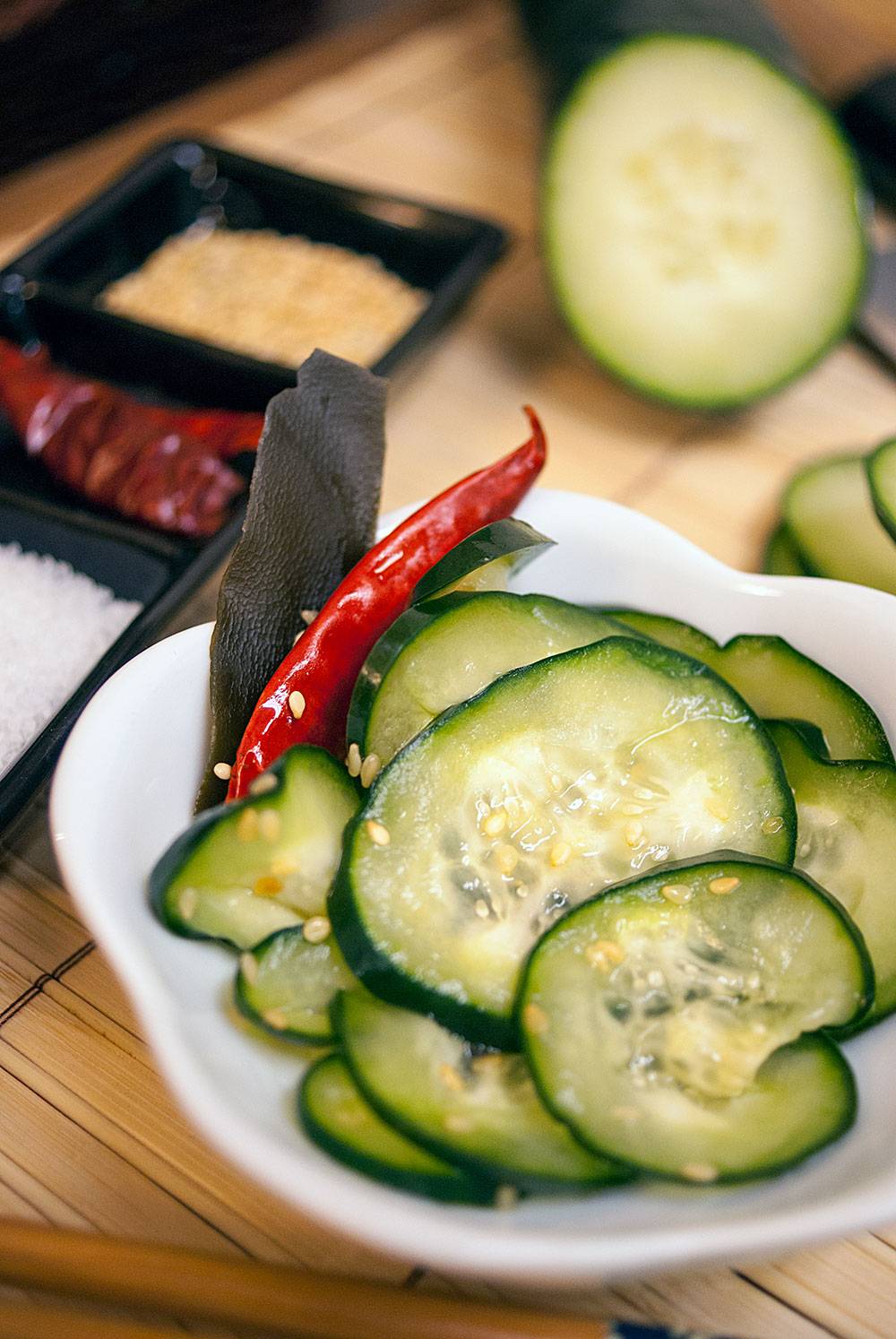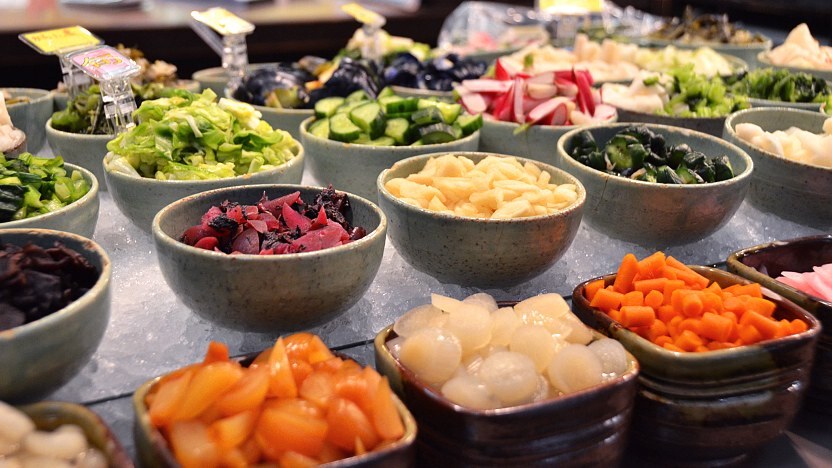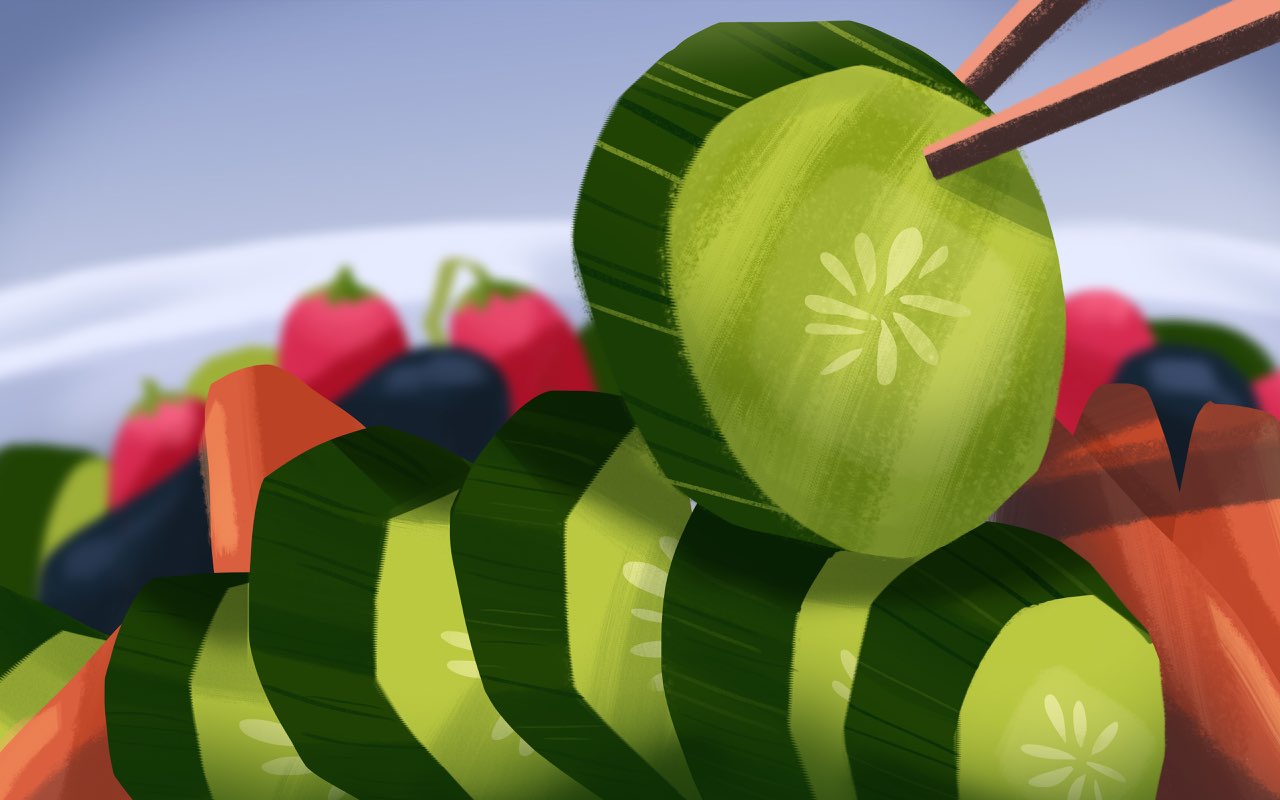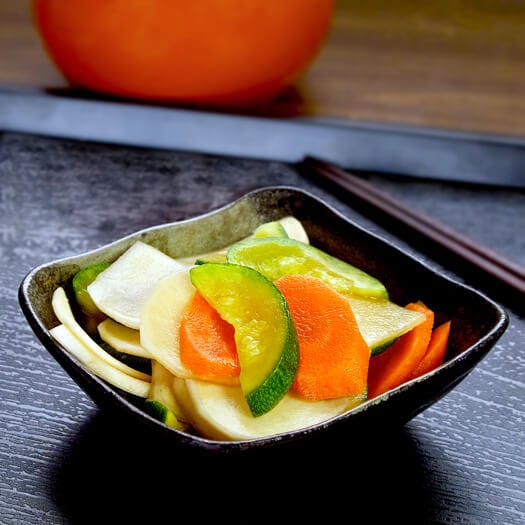Tsukemono
漬物
Tsukemono are Japanese preserved vegetables (usually pickled in salt, brine, or a bed of rice bran). They are served with rice as an okazu (side dish), with drinks as an otsumami (snack), as an accompaniment to or garnish for meals, and as a course in the kaiseki portion of a Japanese tea ceremony.[citation needed] Tsukemono are also referred to as konomono (香の物), oshinko (御新香), or okōkō (御香々), all carrying the meaning of "fragrant dish" in Japanese. The ko or kō (香) portion in these names means "fragrant", and the term was used as a nyōbō kotoba or "woman's word" for miso in reference to the smell.[citation needed] Over time, this term was also applied to pickles, again for the smell. Oshinko ("fresh fragrance") more specifically referred to vegetables that had been only lightly pickled and that had not yet changed color very much.[citation needed] The term is now also used more broadly to refer to pickles in general.
Source: Wikipedia
Recipes
:max_bytes(150000):strip_icc()/__opt__aboutcom__coeus__resources__content_migration__serious_eats__seriouseats.com__images__2014__05__20140520-tsukemono-tsukemono-fe0b69f1491347f597e9e844552ef93a.jpg)
Do You Know Your Tsukemono? A Guide to Japanese Pickles



:max_bytes(150000):strip_icc()/ICHItsukemono-56a30e743df78cf7727ba01f.jpg)
:max_bytes(150000):strip_icc()/japanese-daikon-pickles-tsukemono-2030915-hero-01-7d3e4da79e664c7bbc662afa7c1abdd3.jpg)

